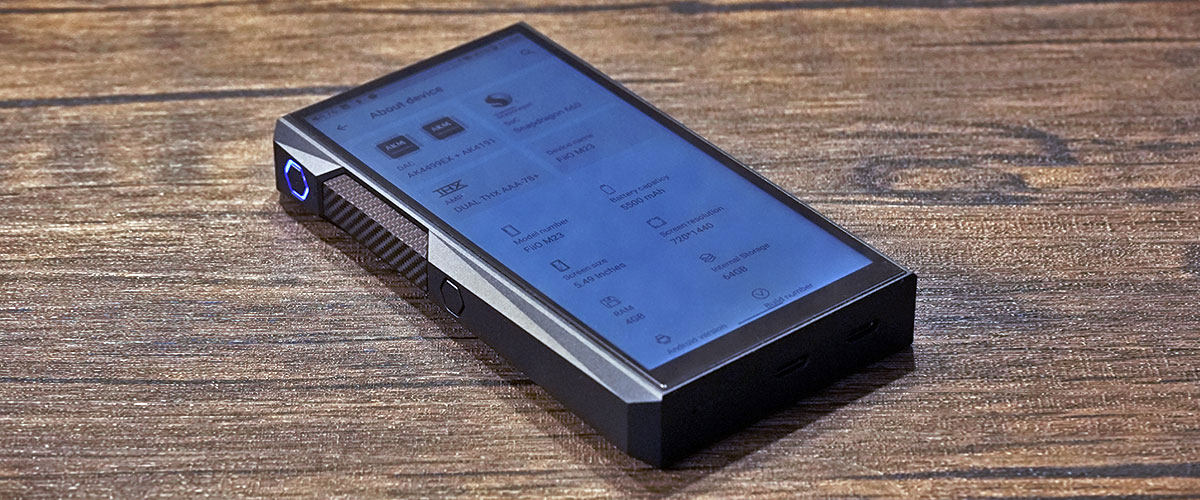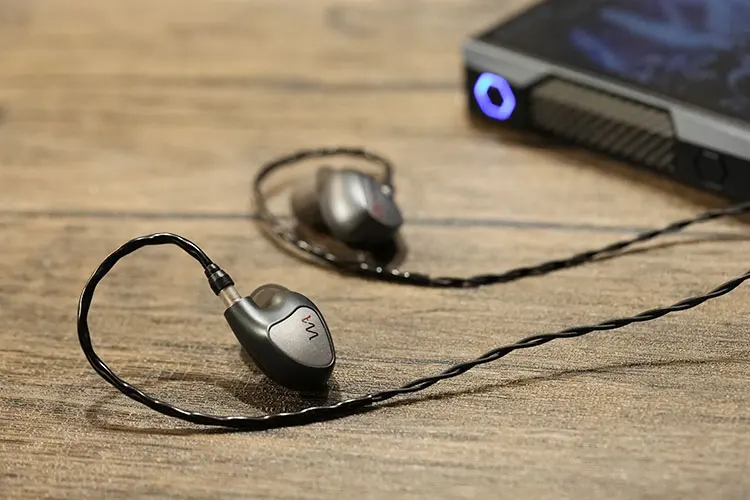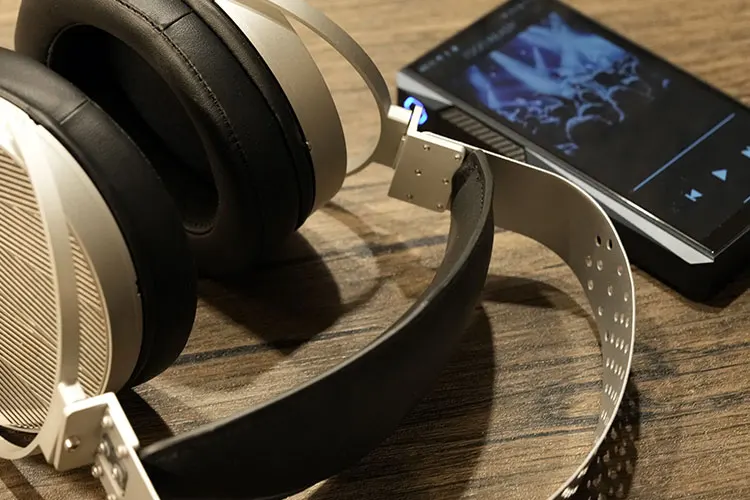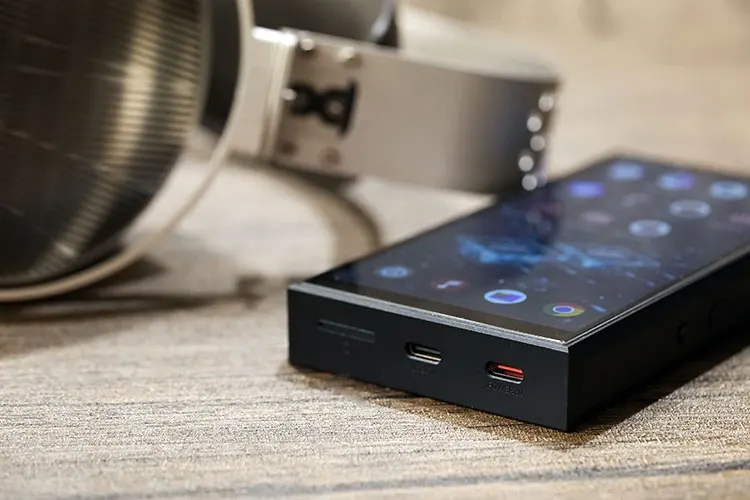Sound Impressions
The following sound impressions were made after burning in the M23 for 100 hours and on the 1.0.1 version firmware, using the balanced output mainly which gives a stronger sense of definition and separation.
It was also paired with the FiiO FT5, the MOONDROP PARA, Earsonics Elements, and the Westone Audio MACH 60.
Summary
FiiO has been consistently upgrading and refining its M series players each year, and the inclusion of Desktop Mode and flagship AK4499EX chipsets in the M23 represents a significant leap in performance compared to previous generation products.
The M23 showcases a smooth M-shaped tuning, offering a pleasing balance between different elements in the mix.
It demonstrates a good sense of control and positioning, particularly when handling complex mixes with multiple instruments and panning effects. The M23 is also able to sound quite stereophonic and has adequate openness when driving demanding headphones.
Timbre
Both the AK4499EX chipset and THX amping, in my experience, deliver a neutral, controlled, and textured signature. The M23 is no exception and strikes a fine balance between technicalities, power, and tonality.
Initially, you may find the M23 to be slightly conservative in its presentation as it doesn’t emphasize the transients. The sweet spot lies at a slightly higher volume with the upper vocal frequencies elevated for added vividness.
The vocal body receives a slight boost to balance with the forwarded upper vocal frequencies, adding a small touch of warmth and preventing excessive analytical sharpness.
At higher gain levels, the overall tuning remains clean, with the bass exhibiting good agility for airy, punchy attacks. The mid-bass area carries sufficient energy and tight transients, creating an inviting vibe, while the mids sound denser, empowering vocals to sound more holographic.
The upper register is pleasantly rounded, with the subtle presence of upper harmonics for clarity, ensuring the vocals retain a smooth character even at the highest gain levels, maintaining satisfactory dynamics.
The M23 maintains a smooth presentation of the mids without overshadowing accompanying instruments.
Enabling the Desktop Mode further enhances the level of clarity and positioning of vocals, providing even clearer outlines and more air, which further opens up the upper register and the naturalness of the presentation.
The bass has a fuller-sounding decay but has the power and control to handle larger ensembles with fast-impacting bass. However, when running on its own battery or lower gain modes, it may feel slightly more contained or flattened in comparison.
Staging & Dynamics
The M23 renders a calm and immersive soundscape with its decent dynamic range and strong noise control even at higher gain levels.
With the Westone Audio MACH 60, the M23 presents decent depth and rich lows that image the vocal with a more solid body. It doesn’t stress the transients too much, but you can still easily focus on the vocalist or the position of the instruments.
Switching on Desktop mode is preferred as it enhances the perceived resolution, extension, and dynamics. It sharpens the two ends, sounding more spacious and adding extra power for the midrange to stand out.
The vocal harmonics are more articulated than the more rounded presentation when on its battery, with the bass reaching deeper down more effortlessly and sounding better defined.
When using sensitive IEMs with the M23, I recommend switching to the mid or high-gain setting to achieve better dynamics.
With the increased gain, the vocal line especially weaker voices, becomes more forward and energized, allowing them to be heard more prominently.
Synergy
The M23 doesn’t have a strong character or coloration but sounds smooth and rounded. It works well with more colored gear especially mid-centric ones that give the vocals stronger texture.
The smooth tuning is a good start for equalizing, and I would recommend tuning up 10kHz onwards for more sparkle and to give the lower vocal frequencies a bit more emphasis.
Efficiency
Noise control and dynamic range have been much enhanced on recent FiiO products. Even on higher gain modes the M23 remains very quiet in the background and allows users to try sensitive gears with higher gain as a means of tweaking the tone as mentioned.
When using the Desktop Mode, the inbuilt power filtering cannot pass on the interference induced from my noisy USB power source directly from the wall outlet.
With headphones such as the MOONDROP PARA, the output is very quiet on all gain levels with good dynamics delivered.
Power
The M23 DAP pairs and performs well with headphones due to its 1000mW output per channel capability.
With harder-to-drive IEMs and Planars, the M23 still sounds dynamic and textured on the HiFi Boost Mode and Desktop mode. If you want to save some power for a long ride then turning to low gain will make the output more soothing, at the expense of a part of the resolution and openness.
The Desktop Mode is not only about sheer power but also the level of control and detail extraction being enhanced when switched on.
This is a particularly friendly trait for planars or less sensitive IEMs. You will perceive more weight and a stronger sense of stereo imaging holding the vocals tightly together when Desktop Mode is active.
So, although on paper it may not compare with some higher output numbers, the performance is worth complimenting.
Pairings
Testing with the MOONDROP PARA sub-bass down to 60-70Hz can be detected. The good presence of fundamental lower frequencies gives vocals and bass instruments sufficient support to sound full and punchy.
The M23 pairs well with gears that are more elaborated in the mids and perhaps sharper in the treble if you are using it outdoors.
On another note, the output impedance is <1Ω for SE connection and <2Ω for BAL output, which allows the M23 to work efficiently with IEMs around 16Ω in impedance.
Testing with the Westone MACH 20 the output is full and dynamic, delivering weaker voices with good intensity but may smoothen darker voices to sound slightly flat, equalizing would be great to boost the dynamics in this case. You may find the tuning working better for instrumentals or Classical music.
With the 6-driver Westone Audio MACH 60 IEM, fullness in the mid-lows is enhanced as well as the definition and response speed. The Mach 60 kicks quite deep on the M23 and the vocal cuts through nicely as do woodwind instruments.
The staging sounds moderately large with decent instrument positioning and the clean tuning works well with live recordings.
If you are listening at home, I would recommend using the Desktop Mode at all times even when pairing it with IEMs, as it brings up the micro-details and stronger dynamics.
Wireless Connectivity
The M23 supports Airplay, DLNA receiving and transmitting, and LDAC/LHDC/aptX-HD Bluetooth connection which covers most of the mainstream wireless streaming scenarios.
Bluetooth
From SBC to LDAC and aptX-HD the most common type of Bluetooth codecs are covered. However, aptX Adaptive is missing but it is not an issue as you can always switch to the more lightweight codecs for lip-synced transmission.
I have tested the M23 with various Bluetooth receivers and TWS including the final ZE8000 MK2 and FiiO’s own BT receiver BTR15, and the connection is quick and stable within a few meters. Auto repairing is also smooth and instant.
The Bluetooth signal strength is also tested and is similar to the M11 Plus ESS.
WiFi
Wi-Fi signal strength is similar to the previous generation so it can still stream smoothly when placed behind a thick wallet.
Connection via Airplay is also smooth and stable, all you need is to switch the operation mode to Airplay Mode to turn the M23 into an Airplay receiver.
Wired Connectivity
USB-DAC
By switching to the USB decoding mode, you can use the M23 as a DAC for your laptop or Mac and it supports DSD256 and 32Bit, 384kHz PCM decoding. With my MacBook Air, no USB driver is needed and the current sampling rate and volume are displayed on the UI.
USB-OTG
Another fun feature to explore is the ability to connect external drivers or card readers to the M23, facilitating the transfer of songs between the device and the connected drive.
The M23 supports OTG connections which allow for connectivity with DACs and dongles. You can also connect the M23 to external power while listening through your dongle, leveraging the M23’s streaming capabilities.
Moreover, the M23’s USB audio output can support DSD256 and 32-bit, 768kHz PCM decoding. This is higher than its maximum sampling rate supported during local playback.





